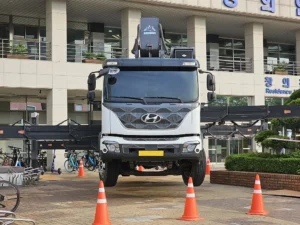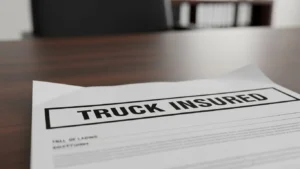The USDOT continues to advance the implementation of AEB technology, while owner-operators express concerns
The U.S. Department of Transportation continues to advance the implementation of Automatic Emergency Braking (AEB) technology. Recently, the National Highway Traffic Safety Administration (NHTSA) announced a regulation that will require AEB installation on all passenger vehicles and light trucks by September 2029, with the possibility of a similar regulation for heavy trucks to follow soon.
According to estimates from the Department of Transportation, the regulation for light vehicles could save around 360 lives annually and reduce the yearly number of injuries by 24,000. Secretary of Transportation Pete Buttigieg stated that these measures, along with the Bipartisan Infrastructure Law, are ushering in a new era of safer travel by ensuring that new vehicles are equipped with AEB, improving road safety for both drivers and pedestrians.
Last year, the FMCSA and NHTSA jointly proposed requiring AEB systems and electronic stability control systems on heavy vehicles. The proposal stipulated that all vehicles in Classes 7 and 8, weighing over 26,000 pounds, must comply with AEB standards three years after the regulation’s enactment. Additionally, vehicles in Classes 3 to 6, weighing between 10,001 and 26,000 pounds, must meet AEB and electronic stability control requirements four years after the regulation’s enactment. Low-volume manufacturers would have up to five years after the regulation’s enactment to comply. Existing heavy vehicles would not be subject to any retrofitting requirements.

Opposition and comments from owner-operators
When the regulation was announced, opposition comments arose from some lawmakers who expressed their disagreement with the emergency automatic braking (AEB) proposal for trucks during a hearing in the Transportation and Infrastructure Committee in December 2023. They argue that the technology is not yet ready, as collision avoidance systems are not foolproof and pose issues, in addition to being costly.
Many truck drivers also voiced concerns during the formal comment period, mostly about the shortcomings of current AEB technologies, citing examples of false activations. Examples include erroneous activations caused by shadows from overpasses or guardrails on curves. The OOIDA noted in September that the regulatory proposal inadequately addresses false activations, fails to consult adequately with professional truck drivers, and does not complete ongoing research programs.
After receiving these comments, the NHTSA decided to launch an investigation in May 2023 into false automatic braking in some Freightliner trucks. Within this investigation, 18 complaints were recorded of AEB false activation when no real obstacles were present on the road. In some cases, these erroneous activations led to the truck coming to a complete stop in the travel lane, endangering other vehicles in the vicinity. The NHTSA investigation remains ongoing.

Truck drivers are at high risk of developing diabetes
About 11% of the adult population meets the criteria for prediabetes, and there is a particular group at high risk: truck drivers. Diabetes rates in

Starting in trucking: required permits, registrations, and compliance
Are you a new carrier? This is what you need to know about permits, registration, and compliance. The trucking industry can be quite challenging for

Alberta Clipper Brings an Early Polar Blast: A Critical Alert for Drivers
The Alberta Clipper is sweeping across the country with fast-moving Arctic air, sharp temperature drops, and dangerous road conditions that demand heightened attention from all professional drivers.

American manufacturers trigger truck “dumping” investigation
Foreign trailer manufacturers under investigation for alleged “dumping” in the U.S. The U.S. truck market is at the center of a trade dispute. After domestic

ATRI Warns: Litigation Is Rising Across the U.S. Trucking Industry
A new report from the American Transportation Research Institute (ATRI) reveals how escalating litigation, higher legal costs, and mounting insurance pressures are reshaping the U.S. trucking industry. The findings mark a critical moment for motor carriers, insurers, and logistics stakeholders who must understand the changing legal environment — and the increasingly strategic role of strong insurance partnerships.

FMCSA says no to hours-of-service exemptions
FMCSA rejects two requests for exemptions to hours-of-service rules for commercial drivers. The Federal Motor Carrier Safety Administration (FMCSA) has denied two exemption requests related
